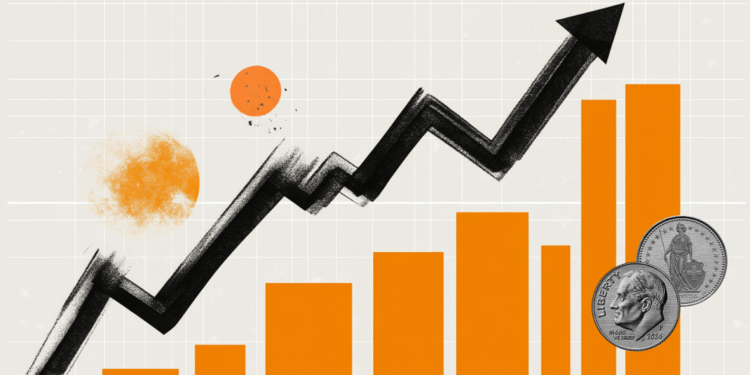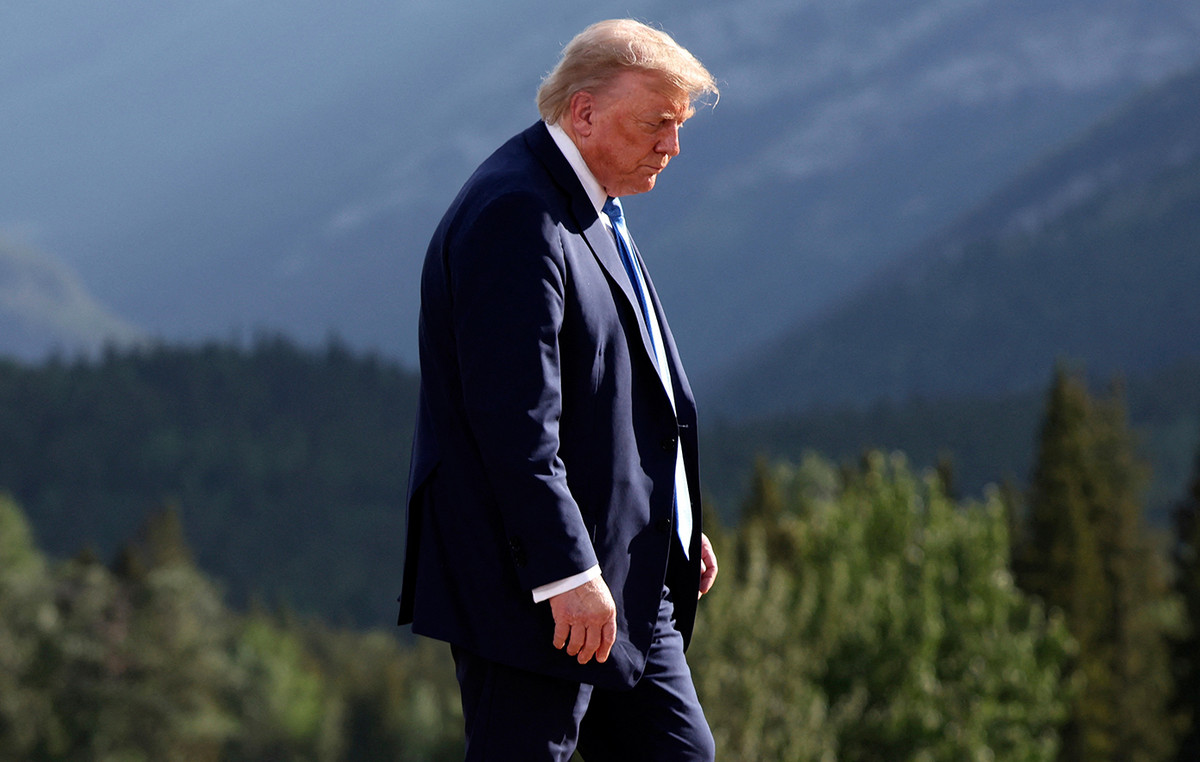- The gold is maintained above $ 3,380 while the US dollar is stabilized before the Fed decision.
- Fed projections can exceed Israel-Iran risks if they suggest higher interest rates for a longer period.
- A moderate Fed could boost gold, while a hard line tone risks a break in the Xau/usd.
Gold (Xau/USD) remains stable about $ 3,385 on Wednesday, supported by persistent geopolitical tensions and the caution of investors before the Federal Reserve Policy Decision (FED).
At the time of writing, the price action remains stable above $ 3,380, with the operators focused on the Fed fees perspective, updated economic projections and the tone of the president of the Fed, Jerome Powell; Any of these could trigger sudden movements both in the US dollar and in gold later in the session.
Recent comments from the president of the US, Donald Trump, have fueled the flows to safe refuge assets. On Tuesday, Trump returned early from the G7 summit in Canada to meet with his national security team in the White House and discuss the possible scale of US participation in the growing conflict between Israel and Iran.
The Wall Street Journal reported that, although “an attack was only one of the options that were discussed,” no final decision had been made on military action. In a publication in Truth Social, Trump wrote: “Now we have total control of the skies on Iran”, reaffirming their demand for “unconditional surrender.” He also dismissed the idea of a high fire, stating that he wanted a “real end” to Iran’s nuclear ambitions. These developments have increased the concern in the market, reinforcing the attractiveness of gold as coverage against growing geopolitical risk.
What moves the market today: Fed rates expectations take prominence
- According to the CME Fedwatch tool, analysts expect the Fed to maintain stable interest rates, remaining in the 4.25% -4.4.50% range during the next two meetings, with a 58% probability of a rate cut in September.
- The Summary of Economic Projections (SEP) and the updated points graph will reveal how those responsible for policies see inflation, growth and the probable path of interest rates for the rest of the year. Investors will closely monitor any change in inflation forecasts and interest rate expectations, since they will shape the perspective of possible rate cuts. In the last points graph, those responsible for policies anticipated two rate cuts by 2025.
- Powell’s tone during the press conference will be key, especially his comments on recent data and if current policy remains appropriate, taking into account the growing uncertainty derived from global geopolitical risks. Moderate signals could weigh on the US dollar and support gold, while a hard line tone could strengthen the dollar and press the gold.
- Because Fed’s policy influences the costs of indebtedness, appetite for the risk and strength of the currency, any change in tone or projections can have a direct impact on the demand for safe refuge assets such as gold.
- In times of economic agitation or geopolitical uncertainty, gold becomes a preferred safe refuge asset due to its intrinsic value and the lack of risk of counterpart, especially when confidence in traditional financial systems is eroded.
- The central banks have significantly increased their gold reserves, acquiring more than 1,000 tons annually in each of the last three years, more than double the average of the previous decade, according to the Gold Reserves Survey of Central Banks 2025 of the World Gold Council.
Technical Gold Analysis: Xau/USD becomes cautious below $ 3,400
The gold (Xau/USD) is quoted just below the psychological level of $ 3,400, stable while the operators expect the decision of the Federal Reserve and the updated economic projections. The price action is maintained about $ 3,380, with immediate support from the Fibonacci recoil level of 23.6% in 3,371 $.
The broader trend remains constructive, supported by the simple mobile average (SMA) of 20 days at $ 3,346.
A decisive rupture above $ 3,400 could pave the way for a resistance area of 3,440 $ -3,452 $, which has repeatedly limited the rise during the last three days of negotiation and represents the upper range of the recent consolidation.
Daily Gold Graph (Xau/USD)

Down, a fall below $ 3,371 would change the approach to the following key support in $ 3,360, followed by the confluence zone about $ 3,320 –3,308 $, where the 50 -day mobile average and a deeper fibonacci setback reinforce the importance of the area. A rupture below mobile socks could point out a deeper correction.
The Relative Force Index (RSI) is about 56, indicating a slightly bullish trend and space for more rise if the Fed indicates a moderate change or feat cuts in the future. On the contrary, a reaffirmation of its hard line posture could limit the profits and press the downward gold.
Fed Faqs
The monetary policy of the United States is directed by the Federal Reserve (FED). The Fed has two mandates: to achieve prices stability and promote full employment. Its main tool to achieve these objectives is to adjust interest rates. When prices rise too quickly and inflation exceeds the objective of 2% set by the Federal Reserve, it rises interest rates, increasing the costs of loans throughout the economy. This translates into a strengthening of the US dollar (USD), since it makes the United States a more attractive place for international investors to place their money. When inflation falls below 2% or the unemployment rate is too high, the Federal Reserve can lower interest rates to foster indebtedness, which weighs on the green ticket.
The Federal Reserve (FED) celebrates eight meetings per year, in which the Federal Open Market Committee (FOMC) evaluates the economic situation and makes monetary policy decisions. The FOMC is made up of twelve officials of the Federal Reserve: the seven members of the Council of Governors, the president of the Bank of the Federal Reserve of New York and four of the eleven presidents of the regional banks of the Reserve, who exercise their positions for a year in a rotary form.
In extreme situations, the Federal Reserve can resort to a policy called Quantitative Easing (QE). The QE is the process by which the Fed substantially increases the flow of credit in a stuck financial system. It is a non -standard policy measure used during crises or when inflation is extremely low. It was the weapon chosen by the Fed during the great financial crisis of 2008. It is that the Fed prints more dollars and uses them to buy high quality bonds of financial institutions. The one usually weakens the US dollar.
The quantitative hardening (QT) is the inverse process to the QE, for which the Federal Reserve stops buying bonds from financial institutions and does not reinvote the capital of the bonds that it has in portfolio that they expire, to buy new bonds. It is usually positive for the value of the US dollar.
Economic indicator
Fed monetary policy statement
After the Federal Reserve Rate Decision (FED), the Federal Open Market Committee (FOMC) publishes its statement on monetary policy. The statement can influence the volatility of the US dollar (USD) and determine a positive or negative short -term trend. A hard line vision is considered bullish for the USD, while a moderate vision is considered negative or bassist.
Read more.
Next publication:
MIÉ JUN 18, 2025 18:00
Frequency:
Irregular
Dear:
–
Previous:
–
Fountain:
Federal Reserve
Source: Fx Street
I am Joshua Winder, a senior-level journalist and editor at World Stock Market. I specialize in covering news related to the stock market and economic trends. With more than 8 years of experience in this field, I have become an expert in financial reporting.







